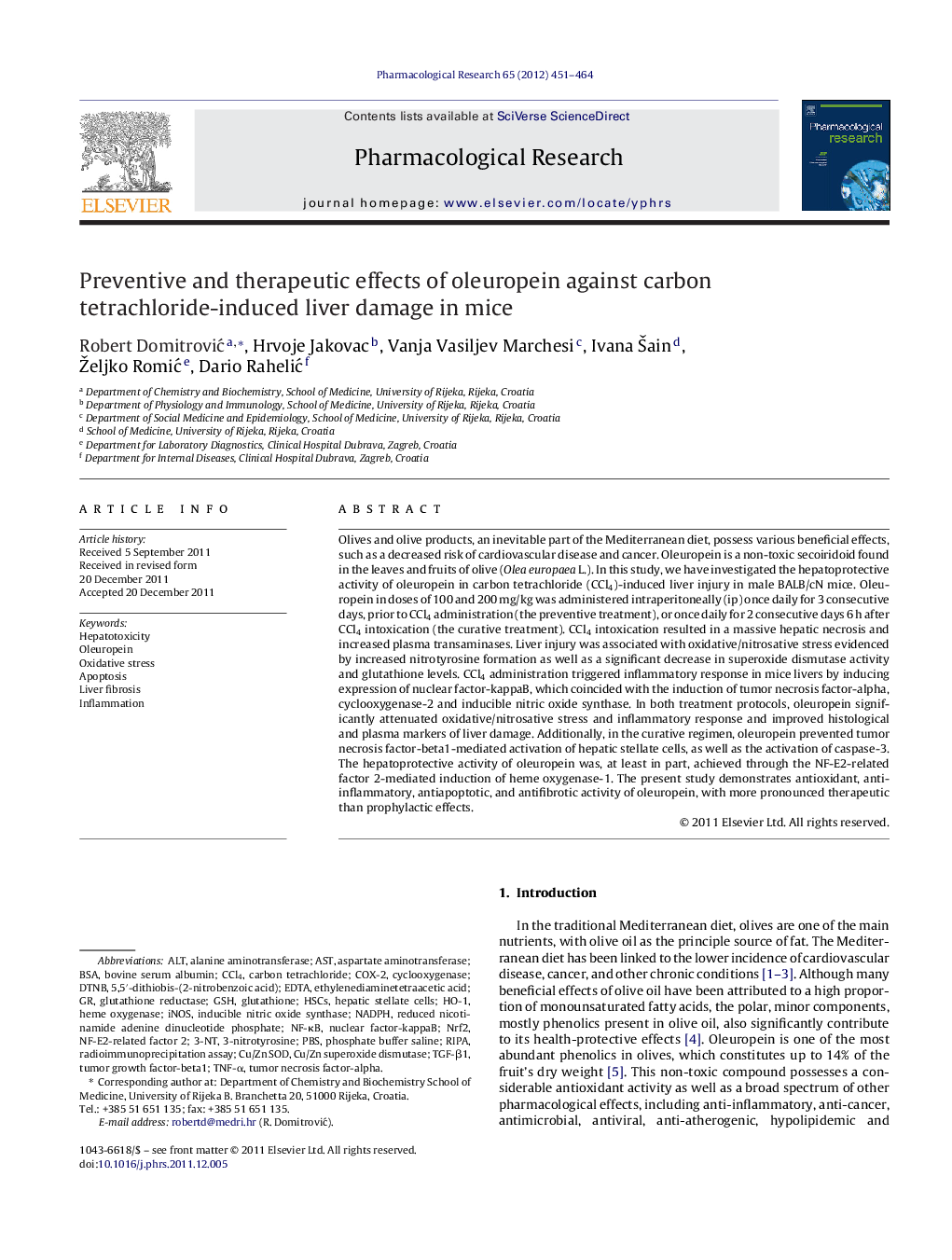| Article ID | Journal | Published Year | Pages | File Type |
|---|---|---|---|---|
| 2561585 | Pharmacological Research | 2012 | 14 Pages |
Olives and olive products, an inevitable part of the Mediterranean diet, possess various beneficial effects, such as a decreased risk of cardiovascular disease and cancer. Oleuropein is a non-toxic secoiridoid found in the leaves and fruits of olive (Olea europaea L.). In this study, we have investigated the hepatoprotective activity of oleuropein in carbon tetrachloride (CCl4)-induced liver injury in male BALB/cN mice. Oleuropein in doses of 100 and 200 mg/kg was administered intraperitoneally (ip) once daily for 3 consecutive days, prior to CCl4 administration (the preventive treatment), or once daily for 2 consecutive days 6 h after CCl4 intoxication (the curative treatment). CCl4 intoxication resulted in a massive hepatic necrosis and increased plasma transaminases. Liver injury was associated with oxidative/nitrosative stress evidenced by increased nitrotyrosine formation as well as a significant decrease in superoxide dismutase activity and glutathione levels. CCl4 administration triggered inflammatory response in mice livers by inducing expression of nuclear factor-kappaB, which coincided with the induction of tumor necrosis factor-alpha, cyclooxygenase-2 and inducible nitric oxide synthase. In both treatment protocols, oleuropein significantly attenuated oxidative/nitrosative stress and inflammatory response and improved histological and plasma markers of liver damage. Additionally, in the curative regimen, oleuropein prevented tumor necrosis factor-beta1-mediated activation of hepatic stellate cells, as well as the activation of caspase-3. The hepatoprotective activity of oleuropein was, at least in part, achieved through the NF-E2-related factor 2-mediated induction of heme oxygenase-1. The present study demonstrates antioxidant, anti-inflammatory, antiapoptotic, and antifibrotic activity of oleuropein, with more pronounced therapeutic than prophylactic effects.
Graphical abstractFigure optionsDownload full-size imageDownload high-quality image (109 K)Download as PowerPoint slide
